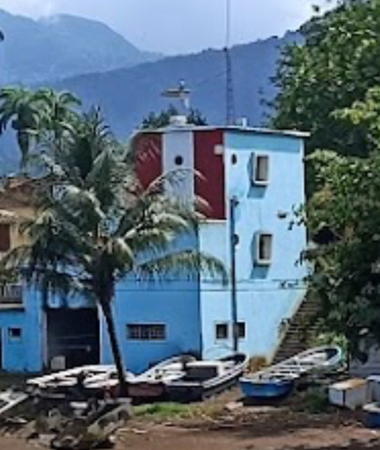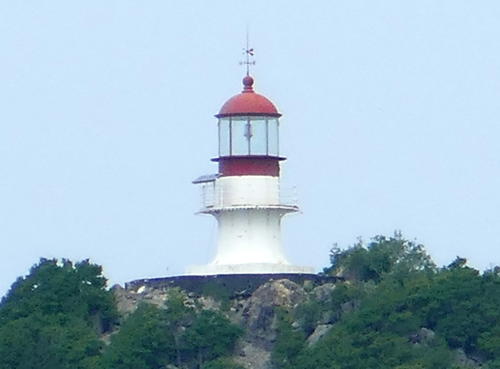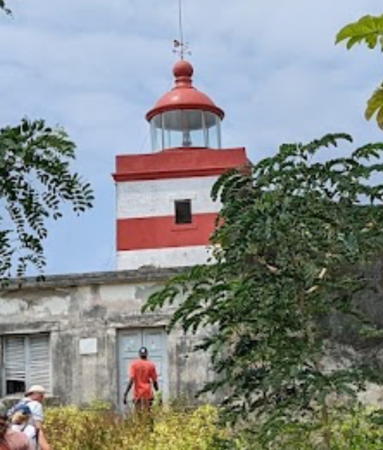The Democratic Republic of São Tomé and Príncipe includes two small volcanic islands off the west coast of equatorial Africa, part of a chain of volcanos that begins on the mainland in Cameroon and also includes the islands of Bioko and Annobón in Equatorial Guinea. The islands were uninhabited until they were discovered by Portuguese navigators in the late 1400s. They continued to be Portuguese colonies until 1975, when they became an independent nation.
The population of the islands is about 220,000. Most live on São Tomé, the larger of the islands.
In the 1990s the navigational service of the Portuguese Navy helped São Tomé and Príncipe create a system of modern navigational aids to guard the rocky coasts of the islands. Most of the aids are concrete post lights. Listed here are those aids that might qualify as lighthouses plus those that replaced traditional lighthouses. Much of the information on the page comes from a former Portuguese Navy web page. Special thanks to Michel Forand for finding this resource and to Walt Hempel for rediscovering it after the Navy moved it to different server. Unfortunately the page has now disappeared.
Portuguese continues as the language of government and trade in São Tomé and Príncipe, along with three indigenous languages. The Portuguese word for a lighthouse is farol, plural faróis; a small lightbeacon is often called a farolim. In Portuguese ilha is an island, ilhéu is an islet, cabo is a cape, ponta is a promontory or point of land, rocha is a rock, recife is a reef, baía is a bay, estreito is a strait, rio is a river, and porto is a port or harbor.
Aids to navigation in the islands are probably the responsibility of the port authority, the Empresa Nacional de Administração dos Portos (ENAPORT).
ARLHS numbers are from the ARLHS World List of Lights. PT numbers are from the Portuguese Navy list, as recorded by the Portuguese Wikipedia. Admiralty numbers are from volume D of the Admiralty List of Lights & Fog Signals. U.S. NGA List numbers are from Publication 113.
- General Sources
- Lighthouses in São Tomé e Principe
- Photos by various photographers available from Wikimedia.
- World of Lighthouses - São Tomé and Principe
- Photos by various photographers available from Lightphotos.net.
- Online List of Lights - São Tomé and Príncipe
- Photos by various photographers posted by Alexander Trabas.
- Lista de Faroís - São Tomé e Príncipe
- Index of the lights in the Portuguese edition of Wikipedia.
- Afrikanische Leuchttürme auf historischen Postkarten
- Postcards from the collection of Klaus Huelse.



